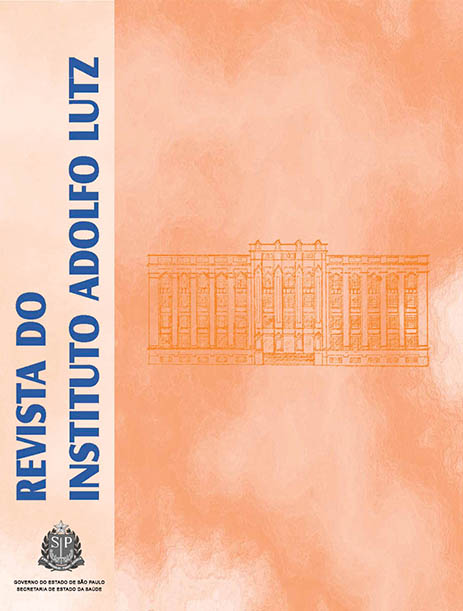Abstract
Lately, the search for healthy and nutritionally rich foods has been much growing. In addition, many persons especially children have lactose intolerance and restriction for gluten and milk proteins consumption. Focusing on children who have these kind of eating disorders, this study developed the chocolate drink formulations free of gluten, milk protein and lactose, prepared with water soluble extract from quinoa and rice. Three formulations (F1, F2 and F3) were produced by varying the two extracts proportions. These samples were assessed by chemical and microbiological analyses and the sensory attribute by 9 point-hedonic scale. The formulations did not differ significantly (p > 0.05) in ash and fiber contents; however, significant differences (p ≤ 0.05) in protein, moisture, lipids and carbohydrates contents and in energy value were found. The formulation containing the highest amount of quinoa extract (F3) got the best rating in flavor attribute, and the highest score to the purchase intention. The chocolate drink developed in this study met the microbiological standards required by legislation, being suitable for human consumption.References
1. Jaekel LZ, Rodrigues RS, Silva AP. Avaliação físico-química e sensorial de bebidas com diferentes proporções de extratos de soja e de arroz. Cienc Tecnol Aliment. 2010;30(2):342-8.
2. Lopes CO, Dessimoni GV, Costa da Silva M, Vieira G, Pinto NAVD. Aproveitamento, composição nutricional e antinutricional da farinha de quinoa (Chenopodium quinoa). Alim Nutr. 2009;20(4):669-75.
3. Repo-Carrasco-Valencia RA, Serna LA. Quinoa (Chenopodium quinoa, Willd.) as a source of dietary fiber and other functional components. Cienc Tecnol Aliment. 2011;31(1):225-30.
4. Miranda M, Vega-Gálvez A, López J, Parada G, Sanders M, Aranda M, et al. Impact of air-drying temperature on nutritional properties, total phenolic content and antioxidant capacity of quinoa seeds (Chenopodium quinoa Willd). Ind Crops and Products. 2010;32: 258-63.
5. Castro LIA, Vila Real CM, Pires ISC, Pires CV, Pinto NAVD, Miranda LS, et al. Quinoa (Chenopodium quinoa Willd): digestibilidade in vitro, desenvolvimento e análise sensorial de preparações destinadas a pacientes celíacos. Alim Nutr. 2007;18(4):413-9.
6. Hirose Y, Fujita T, Ishii T, Ueno N. Antioxidative properties and flavonoid composition of Chenopodium quinoa seeds cultivated in Japan. Food Chem. 2010;119:1300-6.
7. Dini I, Tenore GC, Dini A. Antioxidant compound contents and antioxidant activity before and after cooking in sweet and bitter Chenopodium quinoa seeds. LWT – Food Sci Technol. 2010;43:447-51.
8. Soares Junior MS, Bassinelo PZ, Calliari M, Velasco P, Reis RC, Carvalho WT. Bebidas saborizadas obtidas de extratos de quirera de arroz, de arroz integral e de soja. Ciênc Agrotec. 2010;34(2):407-13.
9. Mathias TRS, Carvalho Junior IC, Carvalho CWP, Sérvulo EFC. Rheological characterization of coffee – flavored yogurt with different types of thickener. Alim Nutr. 2011;22(4):521-9.
10. Medeiros ML, Lannes SCS. Propriedades físicas de substitutos do cacau. Cienc Tecnol Aliment. 2010;30(1):243-53.
11. Borges JTS, Ascheri JLR, Ascheri DR, Nascimento RE, Freitas AS. Propriedades de cozimento e caracterização físico-química de macarrão pré-cozido à base de farinha integral de quinoa (Chenopodium quinoa Willd) e de farinha de arroz (Oryza sativa, L) polido por extrusão termoplática. B CEPPA. 2003;21(2):303-22.
12. Binsfeld BL, Pastorino AC, Castro APBM, Yonamine GH, Gushken AKF, Jacob, CMA. Conhecimento da rotulagem de produtos industrializados por familiares de pacientes com alergia a leite de vaca. Rev Paul Pediatr. 2009;27(3):296-302.
13. Association of Official Analytical Chemists (AOAC).Official Methods of Analysis. 16. ed. Washington, DC; 1995.
14. Bligh EG, Dyer WJ. A rapid method of total lipid extraction and purification. Can J Biochem Physiol. 1959;37:911-7.
15. Australian Official Analytical Chemists. Official methods of analysis of the AOAC International. 17. ed. Arlington; 2002. cap. 37.
16. US Food and Drug Administration (FDA). Bacteriological Analytical Manual. 8. ed. 1995.
17. Capriles VD, Soares RAM, Arêas JAG. Development and assessment of acceptability and nutritional properties of a light snack. Cienc Tecnol Aliment. 2007;27(3):562-6.
18. Ordóñez SAP. Elaboración de Leche de Quinua (Chenopodium quinoa, Willd) [projeto para conclusão de curso]. Quito: Escuela Politécnica Nacional; 2011.
19. Suzuki RM. Composição química e quantificação de ácidos graxos em chocolates, achocolatados em pó, bebidas achocolatadas e sorvetes de chocolate [tese de doutorado]. Maringá, PR: Universidade Estadual de Maringá; 2009.
20. United States Department of Agriculture (USDA). Dietary Reference Intakes: Macronutrientes. [acesso 2011 jun 19.] Disponível em: [http://fnic.nal.usda.gov/nal_display/index.php?info_center=4&tax_level=2&tax_subject=256&topic_id=1342].
21. The National Academies Press (NAP). Dietary Reference Intakes for Energy, Carbohydrate, Fiber, Fat, Fatty Acids, Cholesterol, Protein, and Amino Acids (2002/2005). [acesso 2011 jun 19]. Disponível em: [http://www.iom.edu/Global/News%20Announcements/~/media/C5CD2DD7840544979A549EC47E56A02B.ashx].
22. Brasil. Agência Nacional de Vigilância Sanitária – Anvisa. Resolução RDC n. 12, de 2 de janeiro de 2001. [acesso 2011 jun 19]. Disponível em: [http://www.anvisa.gov.br/legis/resol/12_01rdc.htm].

This work is licensed under a Creative Commons Attribution 4.0 International License.
Copyright (c) 2012 Instituto Adolfo Lutz Journal
